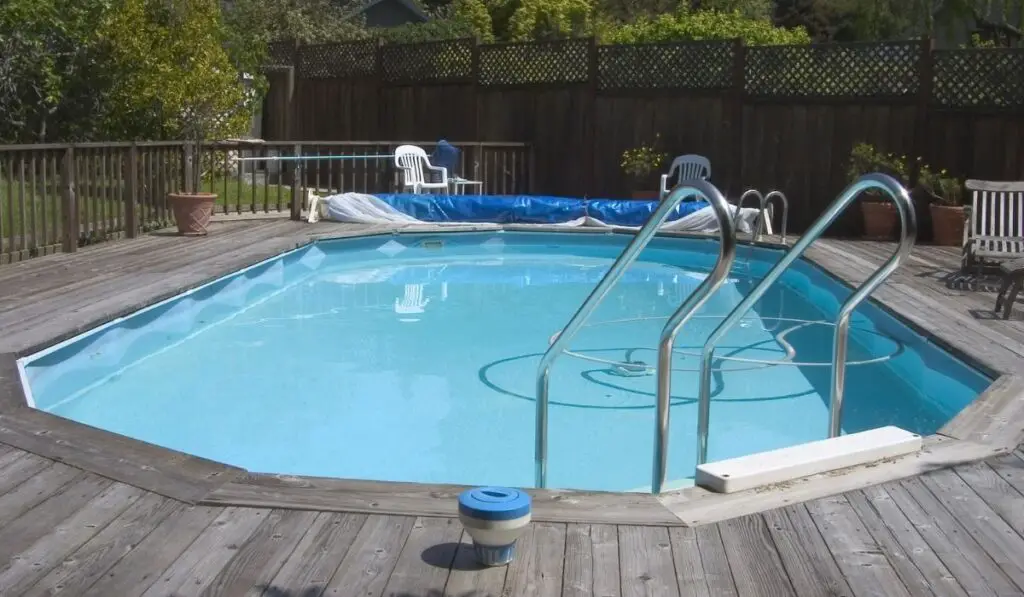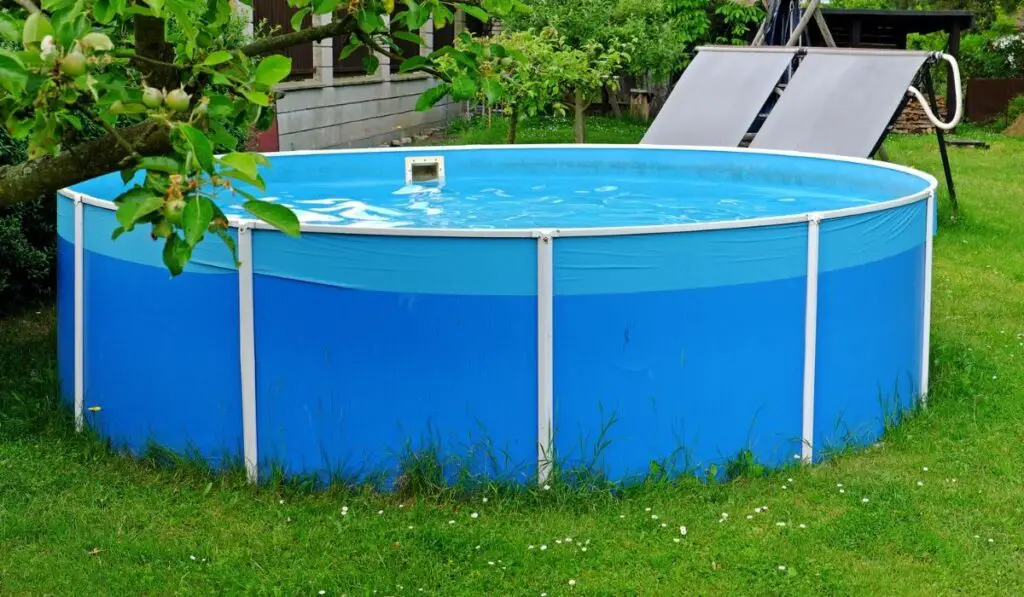In many areas of the country, the swimming season is limited to a few short months in summer. Luckily, this timespan can be stretched with a little help from a heater, and in areas with milder winters, heating a pool could even allow for use all year long. So how do you heat an above-ground pool?
An above-ground pool can be heated using traditional methods like an electric heat pump or a gas heater, both of which can heat the water effectively — for a price. Cheaper and more environmentally friendly options are also available, such as solar covers or solar heating arrays.
Let’s take a look at several ways to keep an above-ground pool warm with and without a heater, as well as what keeping your pool warm might cost you. Getting your pool warm is incredible important, because unless it’s warm you probably can’t use it!
Can You Heat an Above-Ground Pool?

Many people assume that having an above-ground pool implies that you can’t enjoy heated water or an extended pool season like those with inground pools.
This is far from the truth. Above-ground pools can have heat pumps and gas heaters just like inground pools. The process of installation is relatively straightforward.
Heat pumps operate using thermal transfers instead of burning gas or propane. You’ll need to add the heat pump to your pool’s existing plumbing and provide a power source.
Gas heaters can heat the pool very quickly, but in order to install a gas-fueled heater, you’ll need a propane or natural gas source, a gas line, and an electric source that runs to the heater.
A solar-powered heater is an eco-friendly and inexpensive heating system. It utilizes the heat from the sun to heat your pool water. This is different from other external heaters because instead of resting on the top of your pool, the solar panels are installed in line with your water circulation system.
This makes it possible for the heat from the sun to warm the coils, which in turn heat the water before it returns to the rest of the pool.
How Much Does It Cost to Heat an Above-Ground Pool?

This question isn’t so easy to answer. The costs of heating an above-ground pool can vary widely, thanks to the range of heating options. Let’s check out two of the most common heating systems and what they might cost.
Gas Heater
A gas heater makes use of propane or natural gas. This heating option is quite efficient for heating pools in a short period of time.
A gas heater can warm the body of the pool three times faster than an electric pump heater; however, it also consumes three times more energy. Using a gas heater will be relatively inexpensive initially, but the costs will go up as it’s used over time.
The United States Department of Energy (DOE) estimates the cost of heating an outdoor pool with a gas heater at a temperature of 78 degrees to be about $1,500 a year. When heated to 80 degrees and 82 degrees, the cost jumps to about $2,000 and $2,400, respectively.
This cost is estimated based on a 1,000-square-foot pool heated from May 1 through September 30. Every degree of temperature counts. It’s estimated that energy consumption goes up by 10-30 percent for every degree you increase a pool’s temperature.
A gas heater is an excellent pool heater option for you if you don’t use your pool very frequently.
Electric Heat Pump
Electric pumps are designed to heat water efficiently, using less power overall compared to a natural gas heater. If you use your pool frequently, you should consider using a heat pump, since the costs are much lower.
The DOE estimates the cost of heating an outdoor pool with an electric pump at a temperature of 78 degrees to be around $750 per year. When heated to 80 degrees and 82 degrees, the cost increases to about $1,000 and $1,200, respectively.
This cost, just like that of the gas heater, is also estimated based on a 1,000-square-foot pool heated from May 1 to September 30.
Adding a pool cover can help reduce heat loss by evaporation, thereby reducing the cost of heating with either of these options.
How Can You Keep Your Above-Ground Pool Warm Without a Heater?
The cost of keeping your pool warm with a pool heater might be too high for your budget. Luckily, there are some cheaper alternatives that can get the job done. These alternatives include the following:
Solar Blankets
Solar pool covers can help you warm up a pool in the spring and summer — and prevent heat loss from evaporation.
About 75% of a pool’s heat is lost through evaporation. This means that heat can be conserved if the evaporation rate is slowed down, leaving warmer pool water.
Generally, there are two types of solar blankets available: solid blankets and floating blankets.
The solid pool blankets are quite heavy, and as such, they need a mechanical device to roll and unroll them for use or storage. These blankets help to reduce evaporation to almost zero.
Floating solar blankets (on Amazon) are not as expensive as solid pool blankets, and they also slow down evaporation greatly.
Solar blankets can increase he temperature of a pool by up to 15 degrees Fahrenheit, depending, of course, on where you live and the weather conditions.
Solar Rings
Solar rings (on Amazon) are basically large rings that float on the top of your pool water to prevent it from evaporating and losing heat. The rings are small enough that adding or removing them to the pool is a one-person job.
All you need to do is get as many rings as you see fit and put them in the pool. It’s a good idea to choose rings with magnets that allow them to stay connected, thereby reducing the size of any gaps in water coverage.
Liquid Blankets
Liquid solar blankets (on Amazon) are non-toxic liquids added to the pool to create a kind of chemical barrier that slows down evaporation and keeps the pool warm.
Liquid pool covers are not as effective as traditional covers; however, they are invisible to the eye and environmentally friendly.
Wind Shielding
Using a wind shield can protect your pool from wind and thereby slow down the rate of evaporation and heat loss.
The evaporation rate increases with an increase in surface area. Wind creates waves and ripples on the pool’s surface, adding to its surface area and increasing the rate of evaporation and heat loss.
Using some sort of enclosure around your pool, such as the LARMNEE Retractable Side Awning (on Amazon), will help protect it from the effects of strong winds.
